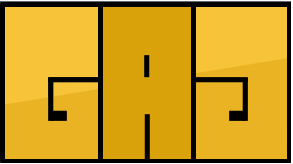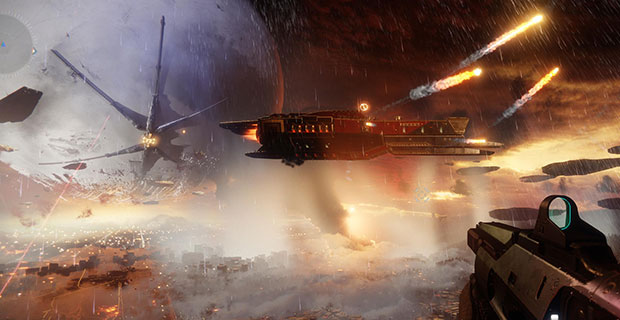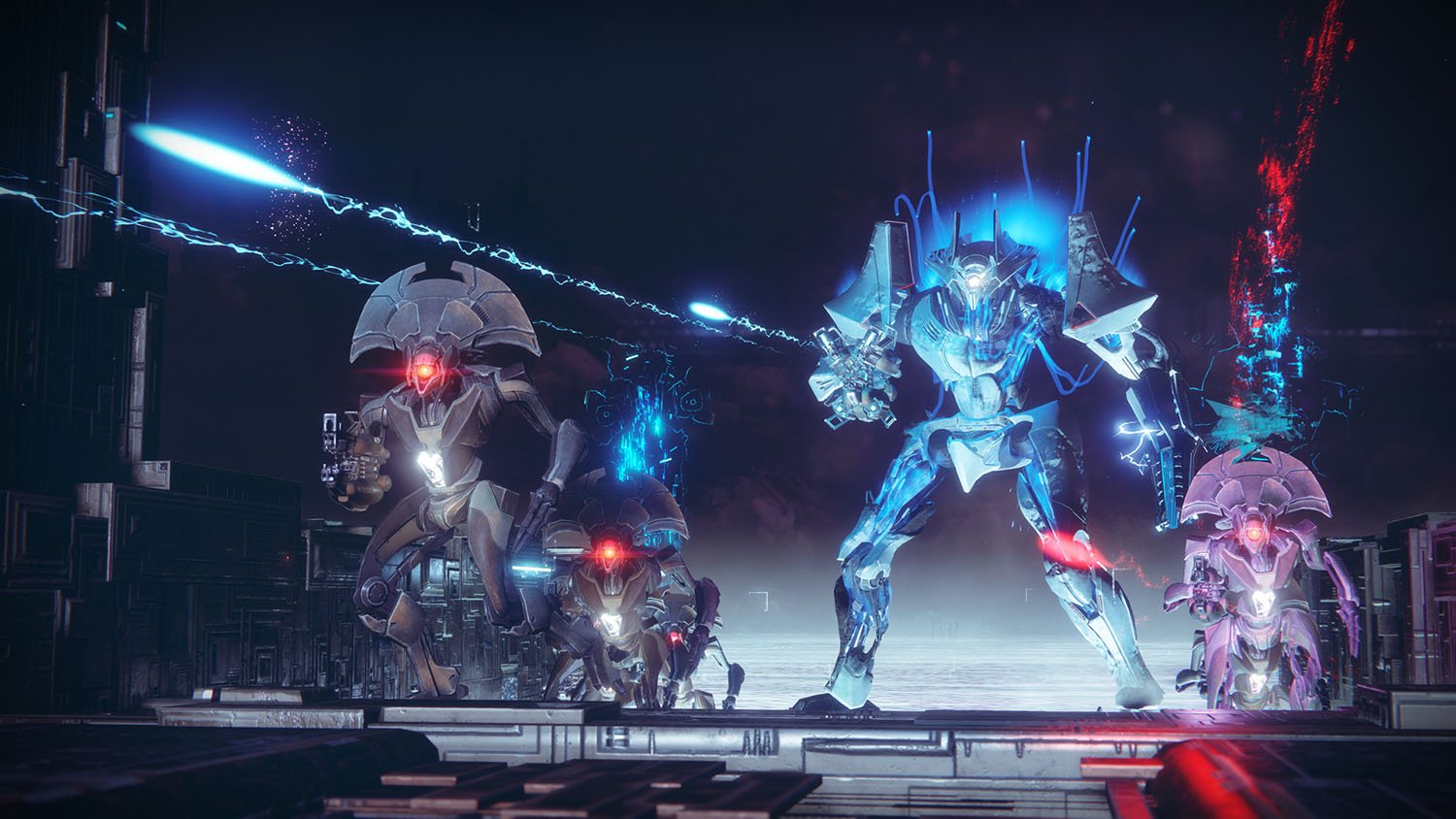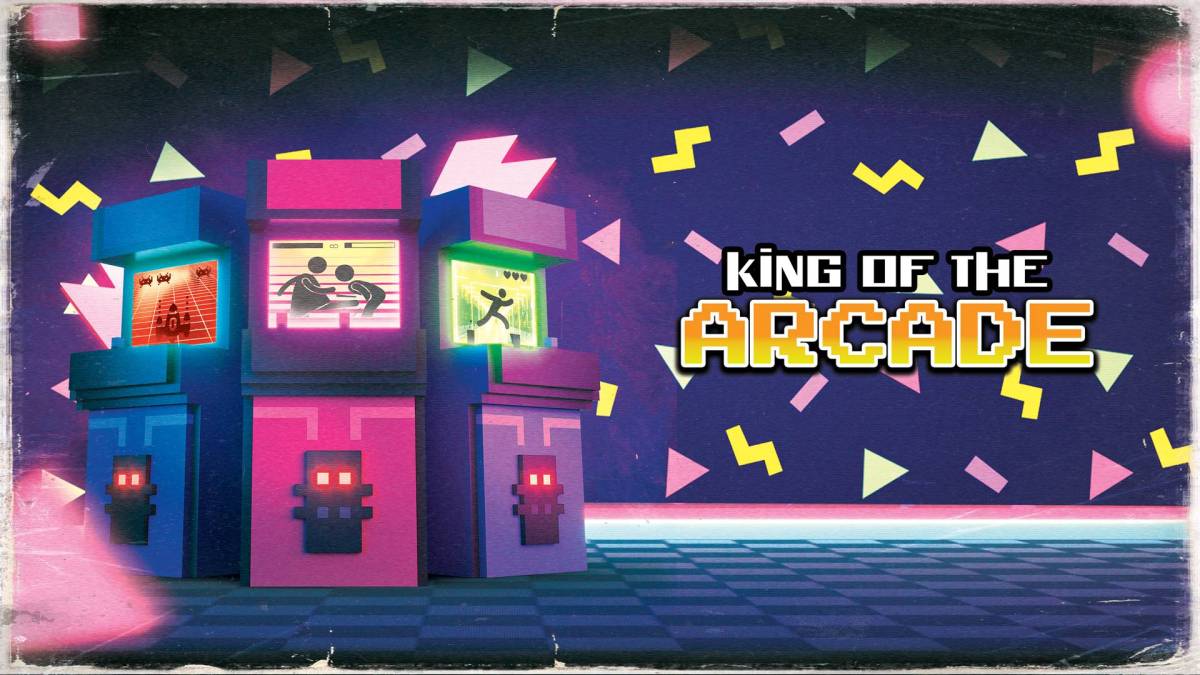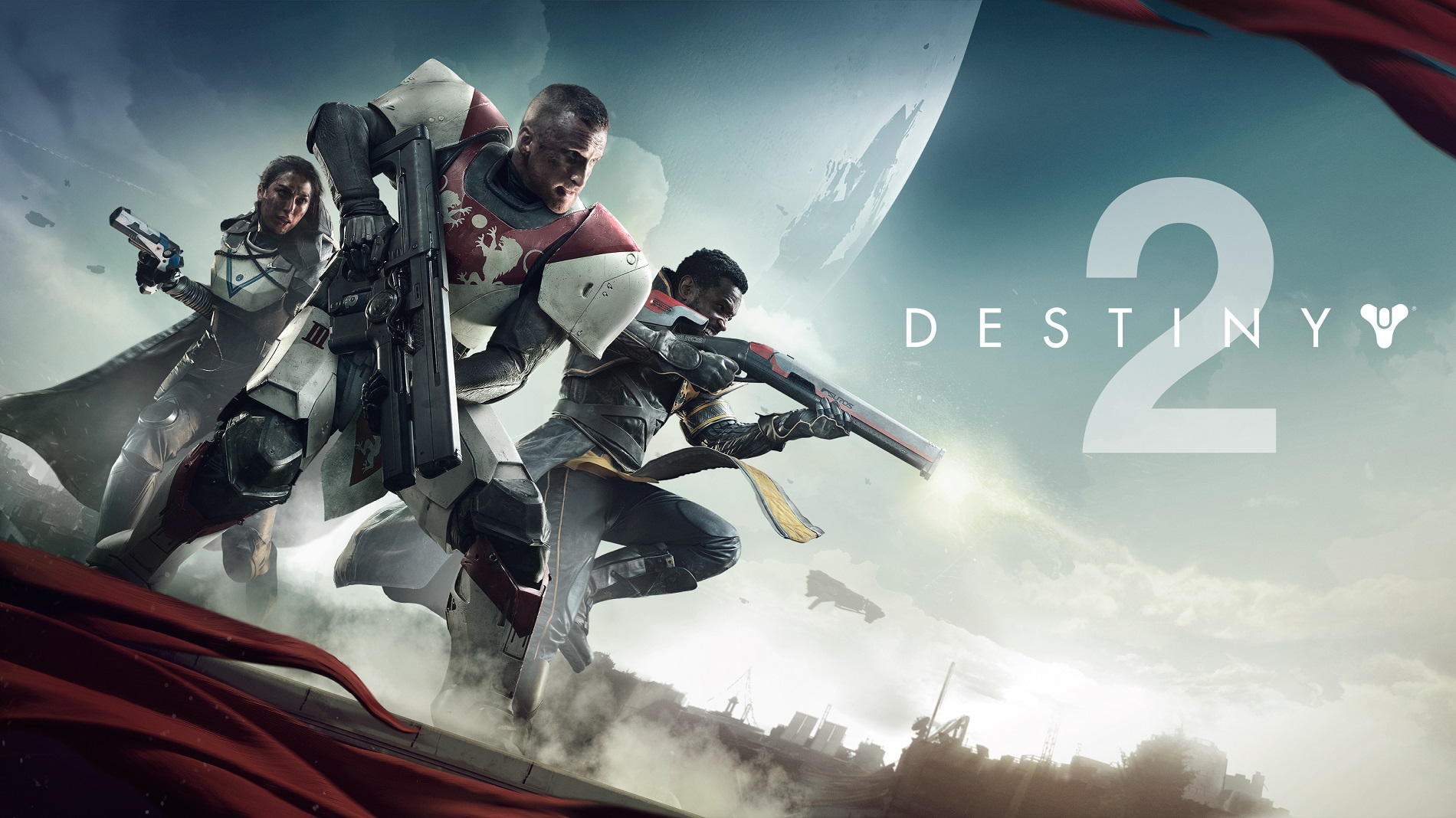
Platforms: Playstation 4 (reviewed), Windows, and Xbox One
Destiny 2 is Destiny with confidence. The first game, while mechanically sound, was plagued by poor design decisions and an oppressive level of grinding in the endgame. It was a full year with the release of The Taken King expansion that the game started to realize its immense potential. With the sequel, developer Bungie hoped to use three years worth of experience to nail it on the first try this time. They succeeded and then some.
A major complaint with Destiny was a meandering and vague plot that left most players with sour tastes in their mouths. This time around, Bungie created a more tangible threat with the Red Legion and their leader, Dominus Ghaul. Ghaul wants The Traveler, the mysterious space orb that came to Earth and gave humanity immortality. The Last City, which was the social space in the original game, is destroyed and the remnants of humanity scattered. What follows is a quest to reunite everyone and free The Traveler. The writing is not going to win any awards, but it is serviceable and, more importantly, cohesive. Your goals are always clear and Ghaul is a menacing enough presence to want to chase after. The campaign is also full of wonderful set pieces, most notable of which takes place on a space station orbiting the sun. All in all, a solid experience that does not overstay its welcome.
The presentation is, at times, jaw-dropping, so much so that the lack of a photo mode seems like a misstep. Every environment has it’s own unique flavor from the methane oceans of Titan to the “Vex Milk” waterfalls of Nessus. Powers of each race combine to make battles feel just short of chaotic with an impressive display of particle effects. The soundtrack is the true star though. Much more memorable than the first, it gives each location a unique feel and can deftly switch from somber pieces to rousing orchestral scores to even some hints of techno and prog rock. I’m not often a video game music guy, but I have found myself going to certain locations just to hear specific pieces. It’s that damn good.
The real meat of the Destiny experience though is the ever present desire to get loot. Thankfully, it is much less of a commitment this this time around. New gear that increases your Power drops constantly, which was previously called Light. Power is an average of all your gear and determines your health and damage output. It is also used to gate off activities. so being able to raise it much quicker is greatly appreciated. In the original game you could spend hours running the same missions and maybe raise it if you were lucky. It was why I bounced off very quickly upon finishing the campaign. Now I can barely pull myself away. The gear design is also much more varied and interesting this time around. It is rare to see two player characters exactly alike. Just don’t get too attached as there is always something better right around the corner.
Getting all that loot wouldn’t be as fun if there was nothing to do with it. Luckily the game is filled to the brim with fun options. Adventure are side quests with some of the more interesting writing in the game and there are dozens. You level out of them very quickly, so I recommend doing them as soon as you can. Patrols are quick objectives that litter the environments. After finishing the campaign, each major location gets its own small set of story missions to help flesh out why you’re there. These are great for exploring what is going on with the other factions as they get little face time in the Red Legion focused story. They also do well to set up possibilities for future DLC and games. Public Events pop up constantly and challenge you to work with strangers to accomplish them. Multiplayer is also a much improved option. Smaller 4v4 matches put greater emphasis on teamwork and fun new game types like Countdown and Survival add some much needed variety. My biggest complaint is only having the option for Quick or Competitive play, as I would like to just pick my preferred game mode.
The best of the best option is hands down the Strikes. This is because they are focused around Destiny 2’s greatest strength – co-op. Strikes require three man “fireteams” and lots of communication. Each is a string of objectives in one-off areas with some of the most memorable visuals in the game. All culminating in boss fights that are frantic without feeling overwhelming. Similarly to multiplayer, I wish I could choose individual Strikes as opposed to a playlist. If you’re feeling a little over-powered for the traditional Strike playlist, you and your friends can try your hand at the weekly Nightfall. The Nightfall is a very hard version of a specific Strike each week and will challenge you in unique ways with restrictions and buffs/debuffs. Finally, the true cooperative king is the Raid, a six man quest that will ask you to do everything from platforming to puzzle-solving. Unique gear awaits those that are able to complete it.
Something you could never take away from Destiny was the overall feeling of playing the game. To put it bluntly, it has the best mechanics of any console style shooter and that is no different this time around. The biggest change is moving shotguns and sniper rifles to power weapons. Your primary is now called kinetic and the secondary is called energy. Energy are elemental based and more effective against shielding. This simple change allows you to quickly swap back and forth to handle it efficiently and effectively. It has some of the finest first-person platforming out there. You have a lot of air control and each mistake feels like your own. Level design often takes advantage of this, so everything doesn’t feel like one long hallway. Each class has a received a third sub-class that are much more offensively focused. The menus are also greatly improved, being easier to read and better item placement. The de-emphasis on multiple poorly explained currencies keeps the upgrade loop tight. Almost everything has been streamlined for the better.
I’ve spent a lot of time praising this game, but it’s not without fault. Many of the best features like Strikes and Patrols don’t unlock until almost the end of the campaign. While this improves the endgame, the early game can begin to feel a little repetitive with only story missions and Adventures as options. The enemy types are almost exactly the same as the first game, save two minor additions and some behavioral changes. This only adds to that early feeling of repetition. The game also doesn’t always do a good job of filtering activities causing you to level past stuff quicker than you would expect. The most controversial change is to make shaders consumables. In the original, I would use shaders to consolidate my armor’s look and just to mix it up. The choice to allow individual shading and shading of every item in the game was smart, but due to the consumable nature I find myself hoarding and waiting instead of experimenting. This change was solely made to monetize and is an incredibly poor, if minor, decision.
Destiny 2 is a massive game with hundreds of hours of content for those interested in making multiple characters. It has an incredibly laid back nature for unwinding and knocking out a few challenges and quests and increasing that Power level. It also offers great challenge for you and a couple friends to tackle together. It has many minor things I don’t like, but that has in no way prevented me from putting in dozens of hours so far, with dozens if not hundreds more ahead. This time around, Bungie nailed it on the first try. Factoring in what is there now, the promise of multiple DLC additions, and interface improvements Destiny 2 will have a strong claim to being one of, if not the greatest, cooperative video games of all time.
At least until the sequel.
